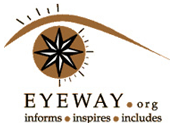This guidance note provides an overview of the risks that persons with disabilities face in the COVID-19 response regarding accessing humanitarian services and proposes actions to address these risks within the WASH response specifically. This note draws on the IASC Guidelines on Inclusion of Persons with Disabilities in Humanitarian Action, 1 WASH chapter, applying these to the North West Syria COVID-19 response.
Why does disability inclusion matter in the COVID-19 WASH response?
Recent evidence suggests that the prevalence rate of persons with disabilities living in Syria, aged 12 years and above is 25%.2 In Aleppo and Idleb governorates specifically, 26% of females and 33% of males (Aleppo) and 30% of females and 34% of males (Idlib) have disabilities. With regards to age, across Syria, 79% of females and 81% of males over the age of 56 years have a disability, which is especially important to note when considering the intersectionality of gender, age and disability in COVID-19 specific response planning and implementation of activities.
Persons with disabilitiesin Syria are known to be at increased risk of protection concerns and transmission of the virus in the COVID19 pandemic. This is because they can face higher exposure rates due to the need for close contact with personal assistants/care givers,4 can be more likely to have an underlying health condition and face attitudinal, environmental and institutional barriers to participate in and access services.5 Inadequate and inaccessible WASH facilities and equipment, such as handwashing stations and hygiene kits, compounds the risk of exposure to the virus and therefore the development of serious illness and complications. In line with the principal motivation of humanitarian action, which is to save lives and alleviate suffering in a manner that respects and restores personal dignity, consideration of the specific needs of person with disabilities to WASH services and adaptation accordingly is of paramount importance during the COVID 19 pandemic.
Key barriers faced in accessing WASH facilities and services
• Persons with disabilities face multiple barriers to engaging in personal protective measures such as using handwashing stations and receiving hygiene kits due to lack of universally designed facilities, distribution methods and exacerbated threats of exploitation and abuse in their local area.
• Persons with disabilities may be separated from family and/or primary caregivers and thus not accompanied by supportive companions to facilitate their access to services.
• Health and hygiene promotion messages may not be accessible for people with hearing, visual and/or cognitive difficulties and therefore persons with disabilities may lack sufficient knowledge on how to protect themselves.
• Persons with disabilities and those with underlying health conditions, can encounter stigma and discrimination at family, community and institutional (service) level. An example includes discriminatory behavior from field staff who may not understand disability and hold misconceptions which can impact the way the staff engage with individuals. In May 2020,
Source: https://reliefweb.int/report/syrian-arab-republic/guidance-note-inclusion-persons-disabilities-covid-19-wash-response

Facebook comments